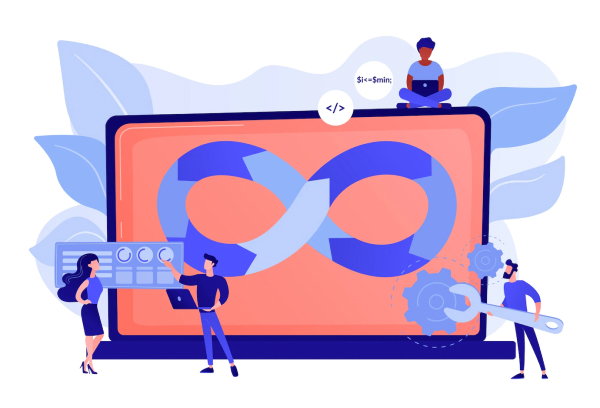Modern software development has to be blazingly fast. Now, the conventional waterfall software development paradigm is swapped with rapid iterative techniques supporting not only development but also release. These techniques have different names, including continuous deployment (CD), continuous delivery (CD), and continuous integration (CI).
The approach that these techniques follow may be different, but their common purpose of continuous iteration in software development remains unchanged. When followed religiously, these techniques can help a business refine its software, add innovative features without raising the risks and costs associated with making them, and accelerate the time to market.
All in all, CI/CD can transform a business – but there are many factors you should consider. In this detailed guide, we dive into continuous approaches and how they work.
UNDERSTANDING CI AND CD
A business鈥檚 approach to continuous improvement defines the relationship between CI and CD. And this relationship can be confusing at times as the CI/CD process is cyclical. That is why it is integral to decoding the differences between continuous deployment, continuous delivery, and continuous integration.
Continuous Integration
This phase primarily covers the initial stages of any software development and delivery pipeline. During the CI phase, the code is developed and is passed through initial testing cycles. Many developers work on a similar codebase at the same time, resulting in doing multiple commits frequently to the code repository.
Throughout the course of a project life cycle, a build鈥檚 delivery frequency can range from daily to many times a day. The fact that builds are frequent and small can reduce the level of risks involved in experimentation and can enable quick and simple rollbacks. When it comes to automation tools, CI uses plenty of them to create builds and perform initial testing – unit testing and sniff testing, for instance. Moreover, CI is noted for offering detailed and rapid feedback. And the limited nature of every single iteration in the CI phase means the bugs are located, notified, and corrected easily.
Eventually, CI ends whenever a build has successfully passed the initial testing phase and is all set to move to more comprehensive testing cycles. The preparation for passing the build to the next stage may include creating its deployable image – a virtual machine or container image – that can be made available for the testing staff.
Continuous Delivery
This part of the pipeline gets activated from where CI has left. CD primarily focuses on the more advanced stages of a pipeline. In this phase, the build that has successfully completed the CI pipeline is tested, validated, and finally delivered for the deployment phase. It is also possible to deploy a fully tested and validated build in the continuous delivery phase, too – but there is no hard-and-fast rule regarding this.
However, continuous delivery relies on automation tools to put a build via advanced testing phases, including configuration, user acceptance, and function. Passing a build through these testing phases helps validate that it meets all the set requirements and is ready to be deployed in the production phase.
Once again, mini incremental iterations ensure that problems get discovered in the testing phase early on and are rectified at speed. This approach to identifying errors is way more economical than the ones followed by conventional software development processes.
Continuous Deployment
This phase shares its steps with the ones found in the continuous delivery part of the software development pipeline. The key difference between deployment and delivery is that the deployment phase is responsible for deploying every validated build to the production phase automatically. When compared with the deployment phase, the delivery phase is only responsible for manually staging the validated build.
The best part about continuous deployment is that it ends the constant monitoring of release dates. Moreover, if done properly, the deployment phase accelerates the loop of customer feedback and minimizes the stress on development and operations teams. With continuous deployment, developers can build the software code and see it getting executed in the production phase barely minutes after completion.

Additionally, continuous deployment is a challenge to implement. Doing continuous deployment requires you to automate every stage of the process. For that purpose, your business will have to invest in building a robust suite of automated testing tools – Jenkins, Selenium, SonarQube, Appium, and Apache JMeter. Most importantly, a business that wants to excel in continuous deployment needs to create a culture of continuous improvement that enables quick detection and fast response to production bottlenecks.
IMPROVE CI/CD OUTCOMES WITH FLEXSIN聽
As a trusted DevOps consulting partner, we helped businesses accelerate digital innovation. We have expertise in optimizing software development pipelines, achieving remarkable production stability, and automating delivery. Our DevOps practice is backed by our capabilities of working with different tools for version control, cloud infrastructure automation, CI/CD pipeline, serverless computing, testing, containers and orchestrators, and more. Connect with our DevOps engineers to get a unified experience to build, test, implement, and scale applications.